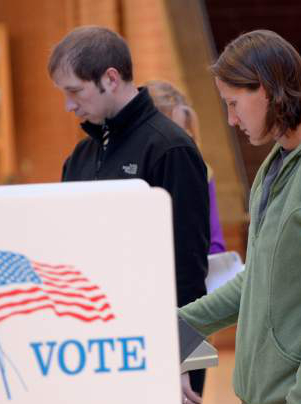This is an archived article that was published on sltrib.com in 2016, and information in the article may be outdated. It is provided only for personal research purposes and may not be reprinted.
Lawmakers are starting the process to replace voting machines statewide that are near the end of their expected lives, and the next generation of voting could be a bit different.
Instead of the current electronic touch-screen machines — which cost $30 million to buy statewide — the state is looking perhaps at using off-the-shelf scanners and programs that could count hand-marked ballots (which fit in nicely with by-mail voting).
Or it might end up buying off-the-shelf tablets to allow electronic voting and printing of paper records. Or it may allow both, or something different — but likely not anything like the current expensive machines, said Rep. Brad Daw, R-Orem.
He says the methods being considered would be much cheaper, and cost an estimated $9.5 to $16 million.
Last time, the federal government helped buy voting machines after the disputed 2000 presidential race between George W. Bush and Al Gore where "hanging chads" and spoiled ballots were an issue. Daw said the state expects no federal help this time.
A committee voted unanimously Friday to endorse Daw's HB334, and sent it to the full House. It sets up a committee to chose the next generation of voting systems, and outlines some things any new system must do.
For example, it must verify that every ballot is readable, and has no issues that would nullify it — such as voting for too many candidates in a race — before the voter leaves the polling place. But it must still safeguard privacy.
Daw was asked if the state has looked at voting via the Internet. He said it has, but the technology is not yet mature enough to safeguard votes and privacy — but it may come in the future.
The bill would set up a grant program for the state to help counties buy any new systems approved by the state.



